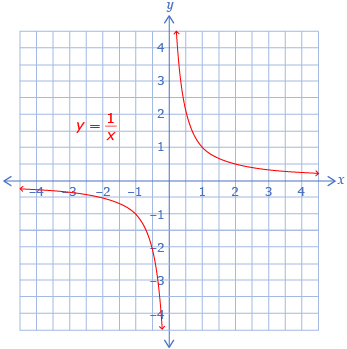Explore
In Try This 1 you began to explore a simple rational function. A rational function f(x) is a function that can be written as ![]() , where g(x) and h(x) are polynomial functions and h(x) ≠ 0.
, where g(x) and h(x) are polynomial functions and h(x) ≠ 0.
The rational function from Try This 1 can be written as ![]() and has the same typical shape as a function of the form
and has the same typical shape as a function of the form ![]() . This function has a vertical asymptote at x = 0 and a horizontal asymptote at y = 0. This is because, if you rewrite the function as x × y = a, you realize that neither x nor y can equal zero if a is a non-zero number. Watch Rational Function Asymptotes to explore the asymptotes.
. This function has a vertical asymptote at x = 0 and a horizontal asymptote at y = 0. This is because, if you rewrite the function as x × y = a, you realize that neither x nor y can equal zero if a is a non-zero number. Watch Rational Function Asymptotes to explore the asymptotes.
It is possible to transform rational functions just like other functions? Try This 2 explores this idea.
Try This 2
- In Module 1 you used the general formula y = af[b(x − h)] + k to help graph functions similar to y = f(x) using transformations. Explain how
 can be thought of as a variation of y = af(x − h) + k.
can be thought of as a variation of y = af(x − h) + k. - Predict the effects of changing a, h, and k in
 .
. - Open Transforming a Rational Function and check your solutions to question 2.

- The function
 is shown.
is shown.

Describe how can be used to graph the following functions using transformations:
can be used to graph the following functions using transformations:
- Use Transforming a Rational Function, if needed, to help answer the following questions.
- Predict where asymptotes will occur in
 in terms of a, h, and k.
in terms of a, h, and k. - Explain how you can determine the domain and range of
 in terms of a, h, and k.
in terms of a, h, and k.
- Predict where asymptotes will occur in
![]() Save your responses in your course folder.
Save your responses in your course folder.
